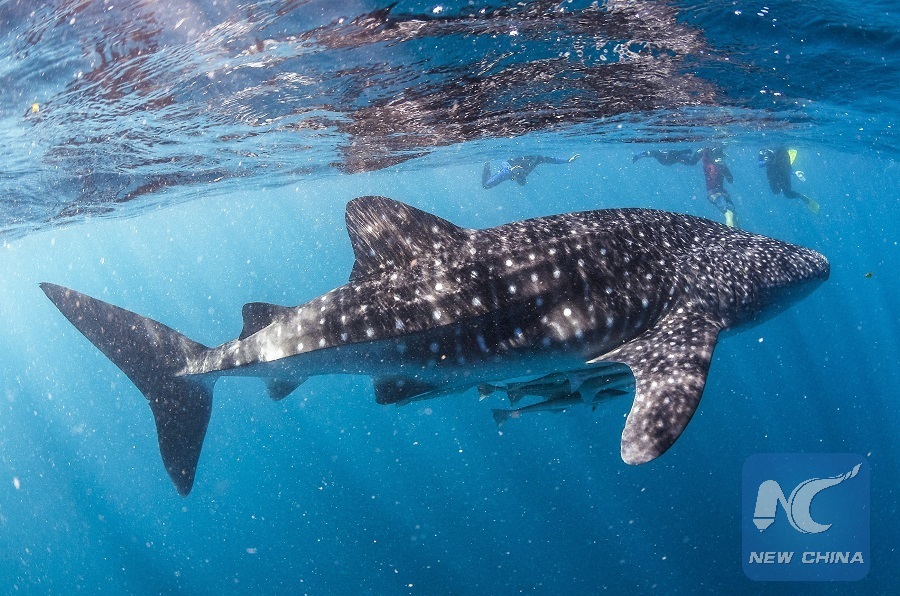
Photo taken on July 11, 2016 shows divers watching a whale shark near Ningaroo Reef in Western Australia. (Xinhua/Nathan Lin)
SYDNEY, Nov. 30 (Xinhua) -- An algorithm developed by NASA to recognize star charts has been used by an Australian marine scientist in a study published on Thursday, to track and identify whale sharks.
The extensive international research project by Murdoch University applied the technology by the American space organization to examine the distinctive spots that appear on whale sharks.
Over the course of two decades, lead scientist Dr Brad Norman amassed around 30,000 photos of the awe-inspiring creatures, sent from "citizen scientists" across 54 countries.
Norman said in a statement that the information provided by citizen scientists and ecotourists through their photographs has played vital role for conservation.
"This effort is helping us to uncover the mysteries of whale sharks and better understand their abundance, geographic range, behaviors, migration patterns and their favorite places on the planet," he said.
Much like a fingerprint, whale shark spots are unique to each animal.
By using the NASA algorithm, researchers have been able to examine photographs from around the globe and identify where each individual whale shark came from.
So far the project has helped uncover 20 whale shark aggregation sites, an increase from 13 when the project began.
The main hotspots are located at the Ningaloo Reef in Western Australia, the Atlantic coast of Mexico, Mozambique and the Philippines.
Norman said the research could be used to prioritize "conservation areas for the species."

